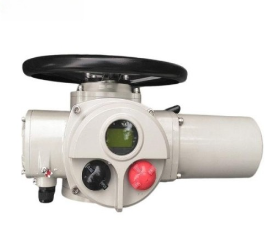Understanding Socket Weld Flanges for Piping Applications and Installation Techniques
Understanding Socket Weld Flanges A Comprehensive Guide
Socket weld flanges are a vital component in piping systems, particularly in high-pressure applications where strong and secure joints are essential. This article delves into the specifics of socket weld flanges, their advantages, applications, and installation procedures.
What is a Socket Weld Flange?
A socket weld flange is a type of flange that features a recessed area to accommodate the pipe. The pipe is inserted into this socket, and the joint is then welded around the circumference. This design provides a robust connection that can withstand high pressures, making it suitable for various industrial applications.
Design and Material
Socket weld flanges are commonly made from carbon steel, stainless steel, and alloy materials. The choice of material depends on the application's requirements, such as temperature, pressure, and the nature of the fluid being transported. The flanges are available in various sizes and pressure ratings, allowing versatility in different piping systems.
The basic dimensions of socket weld flanges comply with various standards, including ASME B16.5 and B16.47, which ensure uniformity in sizes and pressure ratings. These standards categorize the flanges based on their nominal pipe size (NPS), schedule (wall thickness), and type of material.
Advantages of Socket Weld Flanges
1. Strong Joint The design of socket weld flanges creates a larger weld area compared to butt weld flanges, resulting in a stronger joint. This feature makes them ideal for applications requiring high-strength connections.
2. Pressurized Systems Socket weld flanges are particularly effective in high-pressure environments. The welding process produces a continuous seal, reducing the risk of leaks.
3. Ease of Installation The installation of socket weld flanges is straightforward. The pipe is simply inserted into the flange, and once in place, the joint is welded. This process can significantly reduce installation time and labor costs.
4. Reduced Stress Concentration The connection style minimizes stress concentrations that may occur at the pipe's edge. This can lead to longer lifespans for piping systems as it reduces the chances of failure.
socket weld flange

5. Alignment The socket design helps maintain accurate alignment of the piping system during installation, which is crucial for optimal performance and durability.
Applications
Socket weld flanges are widely used in various industries due to their robust performance characteristics. Common applications include
- Oil and Gas Industry Used for drilling, refining, and transportation where high-pressure systems are prevalent. - Nuclear Power Plants Employed in systems that require safe and secure connections to prevent any leaks or failures. - Chemical Processing Suitable for connecting pipes that transport corrosive and hazardous materials. - Water Treatment Plants Used in applications needing reliable connections for high-pressure water distribution systems.
Installation Considerations
When installing socket weld flanges, specific practices must be followed to ensure the integrity and reliability of the joint
1. Preparation Ensure that the pipe and flange surfaces are clean and free of any debris or rust. Proper cleaning is crucial for creating a strong weld.
2. Fit-Up Align the pipe with the socket properly. Any misalignment can lead to weld defects and potential joint failure.
3. Welding Follow appropriate welding procedures based on the material being used. The weld must be performed continuously around the socket to ensure a perfect seal.
4. Inspection Post-welding inspection is vital. Non-destructive testing methods, such as ultrasonic testing or dye penetrant inspections, can be employed to check for weld integrity.
Conclusion
Socket weld flanges play a critical role in ensuring the reliability of piping systems, particularly in high-pressure environments. Their strong, efficient connection method makes them a preferred choice in various industries, from oil and gas to chemical processing. Understanding the design, advantages, and best practices for installation will help engineers and technicians maximize the performance of their piping systems. By choosing the right materials and adhering to proper installation techniques, the lifespan and efficiency of industrial applications can be significantly enhanced.
-
The Key to Fluid Control: Exploring the Advantages of Ball Valves in Industrial SystemsNewsJul.09,2025
-
The Versatile World of 1, 2, and 3 Piece Ball ValvesNewsJul.09,2025
-
Stainless Steel Ball Valves: The Ideal Choice for Efficient Flow ControlNewsJul.09,2025
-
Optimizing Fluid Control with Ball Float ValvesNewsJul.09,2025
-
Manual Gate Valves: Essential for Control and EfficiencyNewsJul.09,2025
-
Everything You Need to Know About Butterfly ValvesNewsJul.09,2025
-
The Versatility of Wafer Type Butterfly ValvesNewsJul.08,2025




